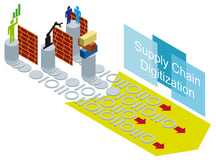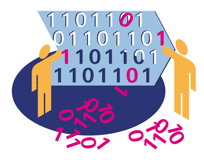Tender Management in the Digital Supply Chain
Brian Hoey - June 25, 2020

 Let’s say you’ve got a large transport network comprised of multiple carriers and multiple hubs, and you’re trying to expand into a new geographic region based on some new clients you expect to land. If it’s a decade or two ago, you probably sit down with a list of phone numbers for potential carriers in the new region and start asking around for quotes. It’s a big list, so you spend a while on the phone and you get more than a dozen quotes. Each company is offering different rates for different parameters, and some of them work better for you than others.
Let’s say you’ve got a large transport network comprised of multiple carriers and multiple hubs, and you’re trying to expand into a new geographic region based on some new clients you expect to land. If it’s a decade or two ago, you probably sit down with a list of phone numbers for potential carriers in the new region and start asking around for quotes. It’s a big list, so you spend a while on the phone and you get more than a dozen quotes. Each company is offering different rates for different parameters, and some of them work better for you than others.
When you hang up the phone and start to sift through the numbers, however, you find that your notes are difficult to make out. Each carrier has a price figure attached, but you can’t remember which ones were based on which criteria, which ones seemed to have reliable forecasts, and what other information each one provided. Worse, you realize you have a couple of production plants you’re working with where you want to make use of backhauls, and you forgot to inquire about those rates. Now, you’re stuck doing the whole process of calling and taking notes over again, or making a decision based on incomplete information. Either way, you’re unlikely to get the best value for your money.
The scenario we’re describing might be old-fashioned, but the basic problem of incomplete information is still very much present in the modern supply chain. That's why it’s time for tender management to go digital.
Challenges in Tender/Proposal Management
When you ask for tenders from different carriers, it’s important to remember that their quoted prices are only as good as their (and your) ability to predict the future. What does this mean? Well, it means that when you’re choosing between different tenders you want to choose the ones that will best meet your needs, even as market conditions change and develop. Your vendors are relying on past data to provide estimates for what it will cost to secure medium to long term capacity, but if conditions change on their end those prices might move up or down, meaning that you have to believe that their predictions about things like fuel and labor pricing are likely to be accurate. By the same token, you need to have faith in your own predictions—not just in terms of future pricing, but of your future needs regarding geographic coverage, integration of different modalities, etc.
All of the above is made more complicated by the fact that tenders often come with a lot of information and a relatively short turnaround time—meaning that you can’t always spend hours poring over your spreadsheets to determine the optimal tenders for expected circumstances. On the contrary, you need to take in and analyze all of this data as quickly as possible. At the highest level, this requires digitization, supply chain integration, and the use of advanced analytics.
How Digitization Impacts Forecast Accuracy
Before we get into the ways that digital workflows can help you make proactive decisions when managing tenders, let’s talk about the foundations of tender management: accurate forecasting. You need to get the right deal for the right volumes and the right regions, but you can only do that if you know what those volumes are going to be in advance. Right now, most businesses across the supply chain estimate future volumes based on past orders—but this kind of thinking can lead to disruption pretty quickly. Why? Because the past, while instructive, isn’t likely to be repeated exactly as the global supply chain changes. Instead, you need to get proactive about using advanced analytics to forecast demand and market conditions.
To do this, you’ll need to collect and store large quantities of data—more data than a human tender manager could possibly sort through by hand—which means you’ll need to connect a large number of data sources up and down your value chain. Your central tender management system should connect with your order management system, warehouses, factory floor IoT devices, and even your suppliers’ and carriers’ IT environments. Naturally, this only works in a highly digitized and highly connected environment, but with these data sources integrated your advanced predictive analytics can start to add value right away. Wondering how much capacity you’ll need to reserve in the next six months? Analytics can help you figure it out. From there, you can figure out which carrier options are the best fits from a pricing perspective, relative to your various parameters.
Tender Management 4.0
The ability to forecast future demand with real accuracy is a huge boon to tender management, but as we enter the era of Industry 4.0, the entire process has the potential to become more and more sophisticated. Imagine a smart, connected tender management solution that helped you:
- Generate tender documents
- Aggregate master data for haulers and other partners, including tariff sheets and routing information
- Visualize carrier statistics and track seasonalities in pricing
- Integrate with freight exchange platforms like Timocom
Further, imagine that all of this functionality is in one centralized location, meaning that stakeholders from different touchpoints can gain insight into the tender management process as needed. Once this information is easy to track, manage, and visualize, you can select the right tender even as conditions and parameters change and evolve. The solution creates a visualization of the potential alignment between each choice and your set strategic goals, and you can adjust your goals and parameters as needed to make dynamic decisions in record time.
Like we said, this technology is going to be a part of the Industry 4.0 revolution, which means that not only do you need the right tools--you need the right tools supporting those tools. That means supply chain integration, IoT integration, real-time data streams, and more. These things can be sticking points for some organizations, but if you’re able to make it past the hurdles and create a smart, connected supply chain, you can begin to save costs and increase efficiency when it comes to tender management.
LATEST POSTS
- Understand Why Production Planning Needs Specialized Solutions
- Understand Circular Economy in The Manufacturing Industry
- How Can Industry 4.0 IT Integration Be Achieved Smoothly?
- The Significance of Order Sequencing in Discrete Manufacturing
- How to improve your Supply Chain Management: The Power of Control Towers



